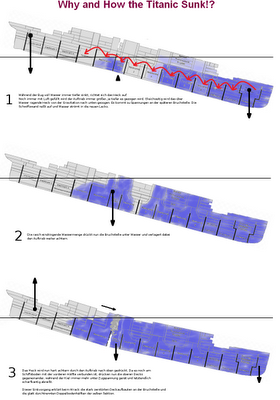
The movie, INCEPTION, besides it was extremely entertaining, reflected back to me a very profound message -> "What ever seed(idea) that is planted into the subconscious mind, given time, it will sprout!" Therefore, the show ended after the seed was planted onto the target, by knowing that it will be carried out in reality later on.
So, what does it got to do with this article on Asset Allocation?!?!
Well, after staying in the market for many years, only until recently, I suddenly realized that someone had first seeded the idea of Asset Allocation in my mind, which then lead me to have the burning desire to know how the stock market works.
Here is the story...
About 9 years ago, a former boss called me up and said that she had just attended an excellent 2-day seminar on "Personal Financial Success" which could lead to early retirement... And, she wanted to share with friends because she thought that could be helpful. Indeed, that was so helpful that it rocked my comforting chair in the corporation into pieces!
And, here is the Outline of the concept of personal financial Asset Allocation:-
Asset Allocation can be defined as the process of evaluating and choosing among the possible asset class for investment. So, that it can generate Passive Income.
Recently I came across an survey that most US citizen has about USD25k of net worth when they reach their retirement age. That's less than one year of their salary! Not even the professional trader can live with this small capital account...
So, in order to have adequate saving, for the working class, one must first break the "Parkinson's 2nd Law: Expenses always rises to meet income". If one don't break this law, no matter how much he made over the years with increments and promotions, he would not have much excess money for investment, and lucky if he don't have debt with his credit card.
The core concept of the Asset Allocation is to divide the money into three portions. Imagine that you have three buckets, and you label them as "Security Bucket", "Buy and Hold Bucket" & "Speculative Bucket". Then allocate the money into there different buckets like planting seeds and letting them grow.
I) Risk Management
The purpose of separating them into three portions is to diversity the risk. One VERY IMPORTANT concept is that these three buckets MUST BE COMPLETELY ISOLATED. Meaning that, if one portion of investment incur losses, one must not use money from the bucket to fill it up again... Until one do his home work to find out what's wrong with the investment strategies...
Otherwise, it might just repeat the tragedy of the "Unsinkable Titanic"... The Titanic sank because of the partitions to isolate the sections of the ship was not high enough. So that the water can flow through the partition from the front section to the back after it hit the iceberg head on.
II) Allocation
And, as for the percentage of allocation of the asset... many text books and financial advisors from banks would recommend you to be more aggressive when you are younger (under 45), then become more conservative when getting older (over 60).
The following is a typical diagram can easily be found from the web... (Will comment on this later on.)
 III) Rebalance
III) Rebalance
These bucket will need to be periodically revisited, preferably 6 months, and adjusted as needs and financial worth change.
-----------------------------------------------------------------------------------------------------
Comment: The above is yet another text book/class room theory for the beginner who did not spend time thinking of asset allocation before... In practical, one will then realize that there are flaws in the theory.
For examples:
1) Why recommend younger people to take higher risk in the market?!
It reasons that if the younger investor fail, then he can has more time to start all over again... That's completely nonsense!
Especially for beginner, it doesn't matter one is a CEO of a high-tech firm or a worker in the workshop... The experiences in his other careers and success don't count when it come to the stock market. All should start with "Very Conservative" in mind.
So, it should not be grouped by ages (as what the investment firms advise)! Rather, it should be grouped by professionalism! And, professionalism means adequate amount of learning, practicing and improving. And that got to do with personal time allocation. :-)
2) Why Buy and Hold for six month period?
Unlike fund manager, in the bear market, they can choose to rotate the fund among different sectors, but there are law to prevent them from cashing all out. Otherwise the market will fall to some point beyond imagination. But, as individual investor, you are free to do so!
"Every challenge we face can be solved by a dream."
- Dr. David Schwartz
----- Added on 21-Aug-2014 on Asset Allocation of Retirement Fund By Different Countries ------
------------------------ Excerpt from the Link ---------------------------------
----- Added on 21-Aug-2014 on Asset Allocation of Retirement Fund By Different Countries ------
What, however, is known is that in a country like Germany between 2005 and 2012 the Pension funds asset rotation out of stocks and into bonds has been truly unprecedented, with stocks plummeting from 30%+ of total exposure to less than 5%!
------------------------ End of Excerpt ---------------------------------
Well, the article above link shows that some European Countries are more conservative and avoid the market - almost completely - is NOT NECESSARY the right thing to do....
The Right Thing to DO is to learn about it and rotate the money In-and-Out of different Markets/Sectors...
Putting in Bond is to accept depreciation through Inflation.
For Example, from 2010 till now (2014 Aug) - many markets already double... Of Course, it would CRASH anytime. The right rule for this game is to rotate the asset from stock to bond when it starts to happen. Avoiding the Risk is another kind of RISK!!!















.jpg)






.jpg)


